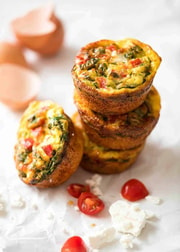These strange errors could turn your $1 coin into a jackpot! Find out why
By
Danielle F.
- Replies 2
Coins are small change used for everyday transactions or even left forgotten in jars.
But what if among those loose changes could be a hidden treasure worth thousands?
It's like finding a needle in a haystack, but for coin collectors and eagle-eyed individuals, the thrill of the hunt is part of the charm.
A rare $1 coin recently made headlines not for its shiny gold appearance but for a curious and lucrative mistake.
This 1984 $1 coin was mistakenly struck on a 10-cent blank, which instantly made it a collector's dream coin.
The coins reportedly have a value ranging from $2,000 to $3,000—enough to boost anyone's savings or fund a grand holiday!
The error resulted in the coin being silver instead of the usual gold, which occurred during its minting process.
These errors are incredibly rare, with only a handful of these coins in existence.
One of these coins recently went under Roxbury's Auction House's hammer with a price guide that had collectors buzzing with excitement.
Scott Waterman, the director of Roxbury's, explained how unusual the coin's error was.
'The blanks are manufactured in South Korea at the moment. There's a factory there that produces blanks for the rest of the world, or a big portion of the world," Mr Waterman explained in an interview.
'The Mint receives those in essentially large hoppers. Very, very, very rarely there will be some contamination so that a coin will get stuck in the machine in the processing, and a 10-cent can end up with the dollars and vice versa.'
'But it's exceptionally rare. Maybe 10 to 20 is pretty accurate in terms of how many of this exact type would be around,' he further explained.
The auctioned $1 coin, while estimated to fetch up to $3,000, sold for $1,500.
However, another 1984 $1 coin with the same error was sold off for $2,800 last year.
Waterman pointed out that each coin is unique, and its price depends on how much a collector is willing to pay.
The auction that featured this rare $1 coin also included over 3,000 other unique Australian and international coins and banknotes.
The collection had an estimated value of $2.5 million.
Among the other treasures were the Holey Dollar and the 1930 Penny—both highly sought items.
Mr Waterman highlighted the allure of error coins and banknotes among collectors.
Things just happen. The reason why they're interesting, cool, desirable and rare is because they happen by accident," he shared.
'Quite often, it's not until much later that you find out about it.'
So, it's time to rummage through your old coin collections and inspect your change with a keener eye.
Who knows, you could be sitting on a goldmine—or, in this case, a silver one!

Have you ever come across a rare coin recently? Do you know other seemingly mundane yet valuable finds? Share your stories with us in the comments below!
But what if among those loose changes could be a hidden treasure worth thousands?
It's like finding a needle in a haystack, but for coin collectors and eagle-eyed individuals, the thrill of the hunt is part of the charm.
A rare $1 coin recently made headlines not for its shiny gold appearance but for a curious and lucrative mistake.
This 1984 $1 coin was mistakenly struck on a 10-cent blank, which instantly made it a collector's dream coin.
The coins reportedly have a value ranging from $2,000 to $3,000—enough to boost anyone's savings or fund a grand holiday!
The error resulted in the coin being silver instead of the usual gold, which occurred during its minting process.
These errors are incredibly rare, with only a handful of these coins in existence.
One of these coins recently went under Roxbury's Auction House's hammer with a price guide that had collectors buzzing with excitement.
Scott Waterman, the director of Roxbury's, explained how unusual the coin's error was.
'The blanks are manufactured in South Korea at the moment. There's a factory there that produces blanks for the rest of the world, or a big portion of the world," Mr Waterman explained in an interview.
'The Mint receives those in essentially large hoppers. Very, very, very rarely there will be some contamination so that a coin will get stuck in the machine in the processing, and a 10-cent can end up with the dollars and vice versa.'
'But it's exceptionally rare. Maybe 10 to 20 is pretty accurate in terms of how many of this exact type would be around,' he further explained.
The auctioned $1 coin, while estimated to fetch up to $3,000, sold for $1,500.
However, another 1984 $1 coin with the same error was sold off for $2,800 last year.
Waterman pointed out that each coin is unique, and its price depends on how much a collector is willing to pay.
The auction that featured this rare $1 coin also included over 3,000 other unique Australian and international coins and banknotes.
The collection had an estimated value of $2.5 million.
Among the other treasures were the Holey Dollar and the 1930 Penny—both highly sought items.
Mr Waterman highlighted the allure of error coins and banknotes among collectors.
Things just happen. The reason why they're interesting, cool, desirable and rare is because they happen by accident," he shared.
'Quite often, it's not until much later that you find out about it.'
So, it's time to rummage through your old coin collections and inspect your change with a keener eye.
Who knows, you could be sitting on a goldmine—or, in this case, a silver one!
Key Takeaways
- An extremely rare $1 coin struck on a 10-cent blank is worth more than its nominal value due to a minting error.
- Around 10 to 20 error coins are believed to exist, with one recently auctioned for $1,500.
- Errors in coins are considered valuable and collectible because they occur accidentally and are typically discovered later on.
- The rare coin was part of an auction that included over 3,000 rare Australian and international coins and banknotes.








